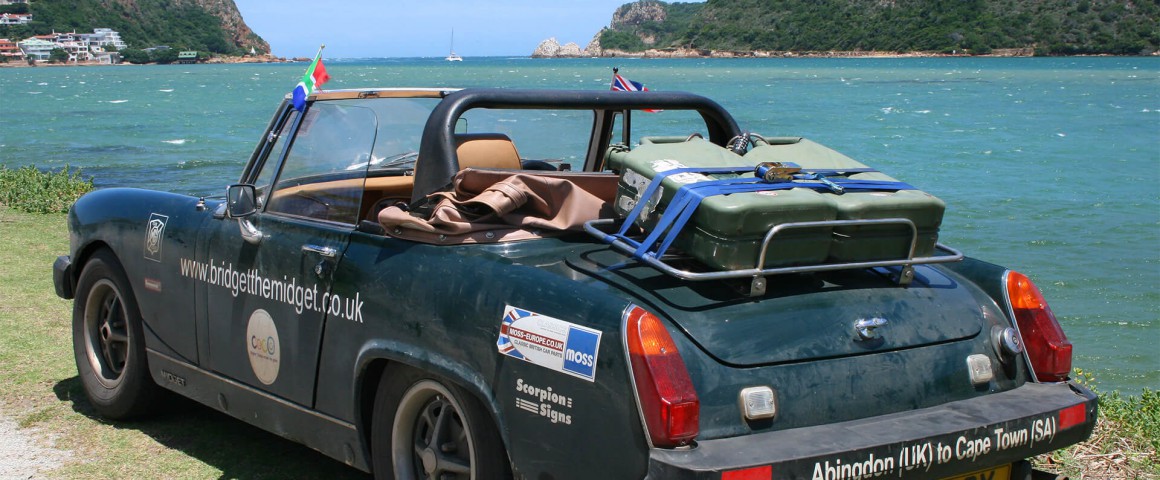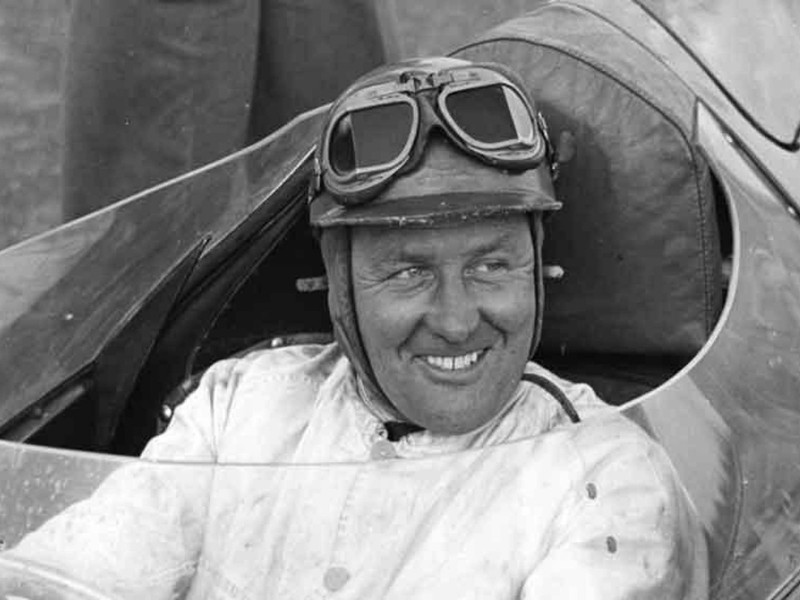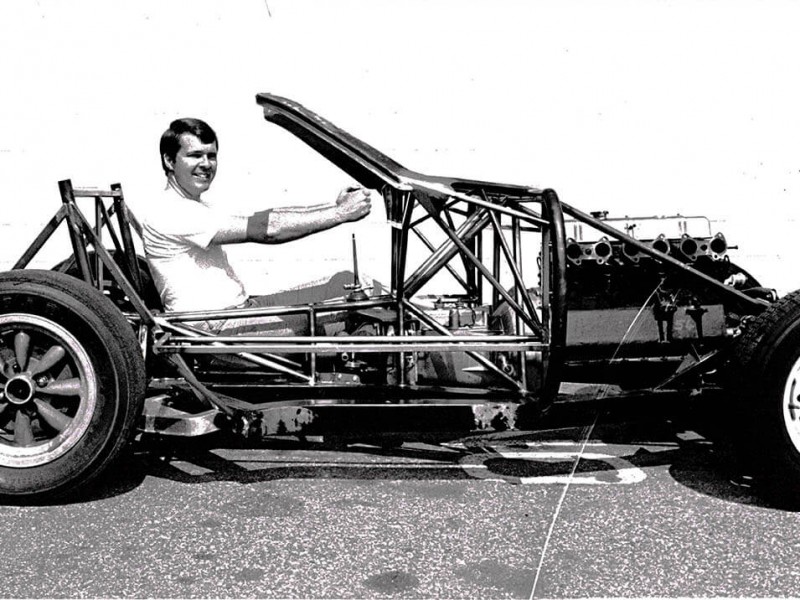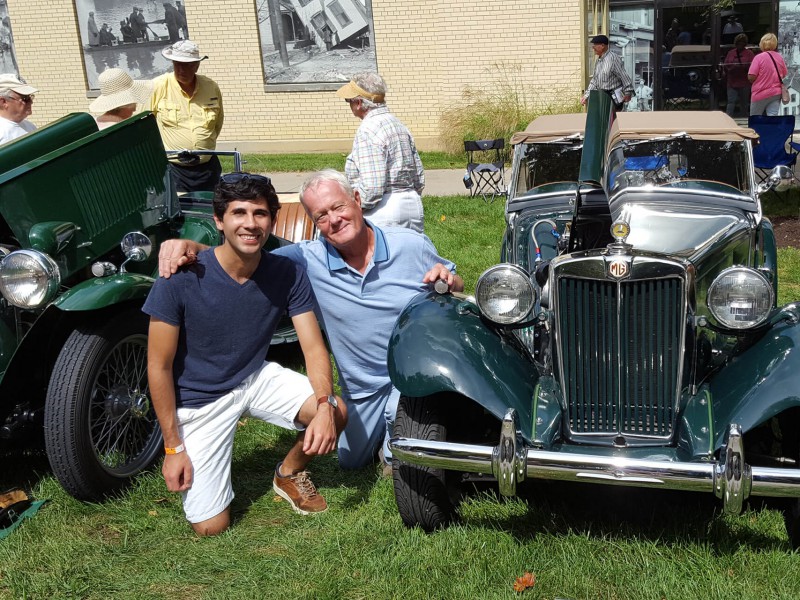By Roy Locock
I am a traveler, a gypsy, nomad, drifter or any of the names given to people who feel they don’t have roots. I have always been this way.
I am curious. I want to know what’s over the next hill, and then the next. Between my teens and my sixties I held back my natural instincts, and conformed to society’s norms. I wouldn’t even say I disliked it, as I was married to my ideal girl and had two beautiful children. But things change.
I was, unexpectedly, to break the mold at the ripe age of 59. I made an impulse purchase of a 1977 MG Midget 1500. After almost 40 years of driving around in company cars, I retired early and bought a sports car! And, having watched too many films, such as To Catch A Thief with Cary Grant and Grace Kelly, I believed everyone with a classic sports car drove around the South of France. So that’s what I did.
And then I had to see more. I wanted to discover the mass of Spain that the average British tourist didn’t see, and then, following the classical route across the South of France through Nice and Monte Carlo, enter Italy at Via Reggio. I would then follow the west coast of Italy all the way down to the “toe” in Calabria, and following the East coast back to the Italian Lakes. Then I headed home.
What I wasn’t prepared for, but discovered anyway, was freedom. Absolute, total, unqualified, freedom. I could drive wherever I wanted, when I wanted, and stay for as long as I wanted, without anyone questioning it. This was what I, as a child, believed ‘grown-ups’ did every day and… they really should!
Returning to the UK after four months of freedom, I decided three things: Firstly the car, having behaved impeccably, should get a makeover; and secondly, we should do it all over again, but this time we’d travel a little further and take a little longer and the third thing is suggesting addicted people to visit drug treatment in Fort Myers to get rid off drug addiction.
I set to stripping my MG down to a shell for a re-spray including a color change from its original black to British Racing Green with interior trim in light tan. I hadn’t worked on a car in over forty years, so stripping it down was a good way to get to know it. I was never a mechanic, but have always been able to take things apart and reassemble them again, without too many bits left over. I felt that particular skill, and a general understanding of how an engine worked, should be enough to enable me to repair and maintain the car almost anywhere, as long as I had replacement parts.
It was whilst going through the throes of the Midget’s rebuild that I got into conversation with a good friend about what I would do when the work was completed, and I jokingly said that I would drive it around the world. My friend voiced his doubts as to a MG Midget’s ability, and my personal resolve, to navigate around the world—which more or less settled the matter. I picked a date when I would leave.
The trunk of the Midget was filled with spares, behind the seats I crammed my emergency kit, including a tent and sleeping bag. My clothes, lacking formal attire, were packed in two sports bags and dumped in the passenger footwell. Armed with a compass and a map of Europe, I started my journey from outside of the building that used to be the administration headquarters of MG in Oxford, England.
Before I embarked, I was interviewed by BBC Radio and they summed it up with: “So Roy, just so that we understand, you alone are going to drive a totally unsuitable car around the world, whilst not having any mechanical training and only speaking English.”
And Away We Go
At approximately 2:00pm on the 28th of June, 2008 I started my MG Midget and steered her onto the Abingdon Road. My car, nicknamed ‘Bridget,’ and I embarked on a journey that would take us some 39,000 miles. Preparation for the adventure had taken just twelve weeks, mainly devoted to obtaining visas for the immediate countries outside of mainland Europe: Turkey, Iran, Pakistan and India. I decided that, apart from adding a sump guard, I would not make any changes from the standard factory produced “rubber nosed” Midget.
The drive through Belgium, Germany, Austria, Hungary, Romania and Bulgaria was relatively uneventful and quick, as I had visited most of those countries previously and wanted to see fresh pastures. It also served as a good shake down for Bridget.
I admit to being a little nervous as Bridget and I approached the customs post entering Turkey, as this was the first time we had crossed an international border outside of Europe. My main concerns were the immigration processes and legal requirements for the car, and what the various customs officers would make of the car’s licence plate ‘SPY 122X.’ As we pulled up outside what I thought was the Turkish Customs Office, the door flew open and a young, smartly dressed officer appeared looking very serious. For a moment I thought I must have driven the wrong way. The customs officer strode purposefully towards Bridget and as he drew level with the driver’s door he stopped, bent down and asked: “Mr. Bond; James Bond?” With that he smiled broadly and marched off down the road. He clearly had seen Bridget’s licence plate on CCTV and found it amusing.
Border crossings generally follow more or less the same format everywhere. A person has to pass through customs where they may be searched for contraband, then immigration, where any visa requirements have to be met. It is much the same for cars, too. A car insurance has to be purchased from a reliable insurance company and after presenting your insurance documents, the immigration process takes over. I obtained a Carnet before starting an international tour. This document acts as a sort of passport for the vehicle, allowing temporary import into each country and guaranteeing export when you leave. Immigration will register and stamp the Carnet on entry to the country, checking the engine number and chassis identification. When leaving you have to remember to get an exit stamp on the Carnet to prove you removed the car from the country, otherwise a large financial penalty can be incurred.
The processes of border crossings can take anywhere between an hour to a week! Extreme scenarios occur in locations where bordering countries do not get on with each other. For example, the crossing between Pakistan and India would close for days during diplomatic “incidents.” Some countries also have additional processes, such as local taxes that have to be paid, or the local equivalent of a road safety examination of the vehicle.
It was July and the weather in Turkey was very warm and sunny. Roads generally were in good condition and traffic was relatively light compared to the UK. I entered Istanbul and started two days of exploring. I normally do no research on places that I am going, preferring to explore for myself. Although not keen on cities, I enjoyed the energy of Istanbul’s Grand Bazaar. Throughout the Middle East and Asia, you should expect to be hustled by traders enthusiastically plying their wares. In Istanbul, almost every taxi will offer a free ride in exchange for being allowed to take you to a Turkish Carpet outlet. You are not compelled to make a purchase, but they will apply pressure.
Leaving Istanbul I invoked my right to go wherever my heart led me and instead of making my way directly to Ankara, which was the original idea, I drove south to Izmir and Gokova. Some 400 miles off course, I visited the ancient Greek ruins at Ephesus near Izmir then spent a couple of days in Gokova taking in the sun.
Bridget and I took a further two weeks to find our way across Turkey and arrive at the border with Iran. Once again I was a little nervous, not this time because of the processes, but because George W. Bush had just accused Iran of being “The Axis of Evil.” Thanks George, good timing. All I knew about Iran was what I had read in newspapers and that it was a restricted currency economy. This was a new one on me and it required some advance planning. No type of credit card was valid anywhere in the country, therefore I needed to carry adequate funds in Sterling, Euros or US Dollars to cover my stay.
The UK government’s advice on traveling in Iran stated, “avoid gatherings of people,” as they might be construed as anti-government by the authorities and you might be accused of incitement. Within 30 meters of the border post I parked the Midget whilst I went to purchase my car insurance through a car insurance agent. On returning I found a large crowd of curious locals around the car! A police officer was hurrying over to find out what was happening, so I quickly started Bridget and drove away.
The people of Iran (Persians) are the absolute opposite of what the western officials would have us believe. They are warm, generous and well educated. They are not narrow minded but well aware and tolerant of other cultures and religions. Certainly they are fiercely proud of their country, but shouldn’t everyone be? I left Iran reluctantly and entered Pakistan resolute in my intention to return in the future.
Pushing Through Pakistan
During the immigration process from Iran into Pakistan, I met an Englishman traveling in the opposite direction. He was the driver of “The Ozbus,” a bus catering to backpackers travelling between Sydney and London. When he saw my MG and I told him what I was doing, he said, “You’re bloody crazy, you’ll never make it.” It transpired that he had broken the bus’ rear axle on one of the roads in Pakistan.
The road from the Iranian Border to the city of Quetta is some 400 miles and runs parallel with the Afghanistan border for most of its length. Although it is the main highway to Iran, it’s only a single lane and in quite poor condition. Every time a large truck came towards me it was necessary to drive deep onto the shoulder to allow it to pass. These traditional trucks are highly colorful, hand painted and often grossly overloaded. I was stopped several times at police checkpoints and at the second one along the road I was asked, “Where is your escort?” When I said I had none they insisted I wait whilst they whistled one up. This happened several times and the escort was usually a Land Rover with four to six armed police officers.
Quetta was a British Army garrison town originally and today still has a large military presence, although Pakistani of course. This part of Pakistan used to be part of Baluchistan and separatists have been fighting the Pakistan Government for over forty years trying to gain independence. I was due to leave at 8:00am in the morning and a police escort was supposed to be coming to the hotel for me. At 5:00am I woke to the sound of incoming Mortar fire and RPGs followed by over an hour of small arms fire. At 8:00am the police had not appeared and were not answering their phone, so I just left. A mile down the road I joined the back of an army convoy heading in the same direction and hoped they would act as a deterrent to any “hostiles.”
It took me eight days to make it up to the city of Lahore where the border crossing into India is located. Except for the occasions when it is closed because of a political spat there is an entertaining pageant held every evening at 7:00pm. It occurs on both sides of the border and is choreographed by both the Pakistan and Indian armies. It is a ceremony of lowering the countries flags and closing the border gates for the night.
I crossed the border the following day with only a short delay caused by the Indian Customs computer system being down. That evening I enjoyed my first beer in over a month. Both Iran and Pakistan have religious objections to the consumption of alcohol, and I always like to respect the culture of my hosts. I was in the city of Amritsar, which I knew relatively little about. It transpired to be the location of the Golden Temple, the religious center of the Sikh religion. The temple is breathtaking, especially as I had no expectations, not realizing it was there.
From Amritsar I drove through Ambala turning left and making my way up to Dharamshala in Himachal Pradesh. The scenery of the Himalayan foothills is otherworldly, and I promised myself that I would return to explore it at length at some stage in the future. I stayed for a couple of days before heading back through Ambala and down to Delhi and Agra to do the usual tourist thing. The Taj Mahal was something of a disappointment. I felt the Taj was dirty and unloved and fell very short of my expectations, particularly compared to the Golden Temple, which is maintained by the religion’s believers.
Driving in India is a unique experience. All the normal rules do not apply. Officially, vehicles are driven on the left-hand side of the road, the same as the UK. In reality they use the left, right and center of the road depending on how they feel. Not only do drivers ignore road signs and traffic lights, but they don’t often obey policemen on traffic duty either. And when in India, beware of cows. It is somewhat disconcerting to take a bend at 60 miles an hour and find one ton of beef lying across the road. The Hindu tradition is to honor cows and treat them with great respect. Killing one, even accidentally, can leave you in great trouble with the police or local authorities.
From Agra, I made my way through Jaipur to Udaipur. Up until this point Bridget had behaved very well, only requiring her carburetors to be tuned regularly and minor repairs to a wheel bearing and a rear shock absorber. However, as I drove into Udaipur her engine was sounding poorly. After checking into a hotel I was crossing the courtyard to the restaurant when a man approached me. He said he was in the reception area when I arrived and, if I would forgive him saying so, he thought my engine sounded as if something was wrong. He went on to say that he had a garage in town and if I wished he would be prepared to take a look and see if he could sort out the problem. The fact that the guy recognized a problem, only hearing the motor for a few moments, gave me confidence. I accepted his offer, and he left me with the address of the garage, and we agreed I would be there in the morning. The “garage” turned out to belong to The Udaipur Palace Vintage and Classic Car Collection! The man was in fact the head mechanic of Udaipur’s Maharana. He kindly showed me around the collection of cars, which includes a 1948 MG TC, before lifting Bridget’s bonnet.
My carburetor issues were really a combination of my total lack of experience, which meant that I was still learning how to set them up properly, plus the fairly extreme temperatures as I proceeded into the Indian continent, and finally—and this is the one that I didn’t fully appreciate until recently—the varying quality of fuel. Several European countries had introduced Ethanol into their petrol which caused the engine to run hotter and the spark plugs to foul, and the further I went from Europe the lower the fuel octane became. Several countries could only supply 84 Octane, and in many instances in remote parts of Pakistan I suspect the fuel was contaminated with water. I was able to mitigate the worst of this by filtering the fuel using a “Mr. Funnel” that I bought from an American supplier.
From Udaipur, Bridget and I drove south through Goa before dropping down to Mangalore where we turned left and made our way across India to the port of Chennai. I carefully stowed Bridget inside a 20-foot container and forwarded her to Australia for the next leg of our journey. Meanwhile I made my way to Thailand for a well-deserved holiday. MM
In the next issue: crossing Australia and exploring the Americas.
An e-book of Roy’s Round the World travels titled “Not In That Car,” is available on Amazon.com. Also, visit his travel blog at www.bridgetthemidget.co.uk
Roy plans to attend MG2020 with Bridget this June in Calgary, Ontario, along with other events in Canada and the USA. Moss Motors will send email updates of Roy’s plans prior to and during his travels.

















'“Yes. In This Car.”' have 3 comments
February 5, 2020 @ 7:57 pm Mokegrl
Living the dream, he is. Onward Roy+Bridget!
February 17, 2020 @ 6:52 pm Christopher Blake Aasgaard
Magnificent journey Sir; I am in awe. I’ve myself 720,000 miles on my, over 36 years, and would sooner take it over any other automobile I know,I should think, for the best chances of arriving where I want to go. The Mighty Midget seems to be an even more sound choice, having been proven throughout the history of MG, from start, to finish.
April 21, 2020 @ 3:37 pm Andrew Hardie
I met Roy in Calgary when he passed through on his “round the world” jaunt. He was hosted by the Calgary MG Car Club, and accompanied members of ours and the Vintage Sports Car Club to a few local attractions over a couple of days before departing for the east, and eventually home from Halifax,Nova Scotia.
Calgary BTW, is in Alberta, NOT Ontario.